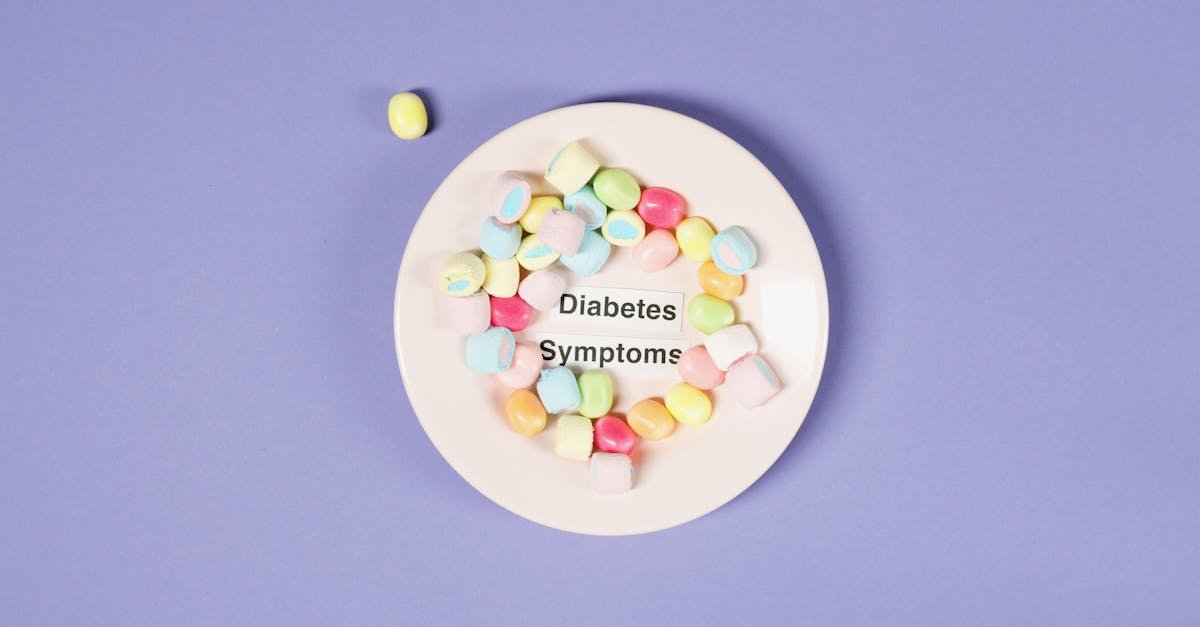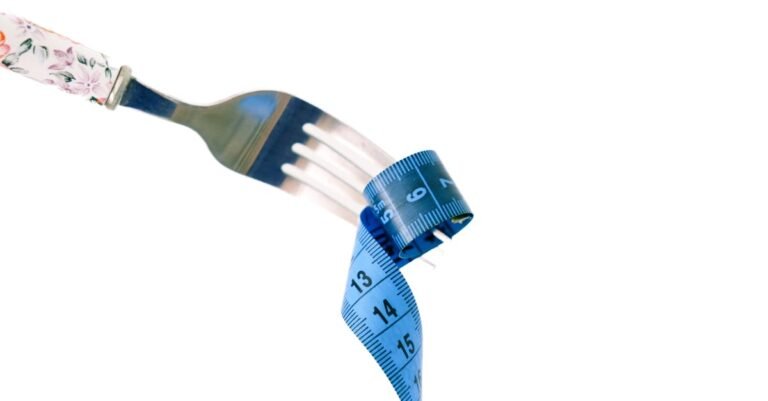Table of Content
- Slashing Sugar: Your Ultimate Guide to Reducing Intake for a Healthier You
- Why is Everyone Talking About Sugar Anyway?
- Sneaky Sugars: Where Are They Hiding?
- Kicking the Habit: Practical Steps to Cut Down
- The Long Game: Sustaining a Low Sugar Lifestyle
- Conclusion: Your Sweet Victory Towards Better Health
- Frequently Asked Questions (FAQs)
Slashing Sugar: Your Ultimate Guide to Reducing Intake for a Healthier You
Let’s talk about something sweet, or rather, something *less* sweet. Sugar. It’s everywhere, isn’t it? In our coffee, our snacks, our sauces, even places we least expect it. We all love a little sweetness in our lives, but what happens when that “little” becomes a lot? It’s a question many of us are starting to ask, and for good reason. The buzz around reducing sugar intake isn’t just another fleeting health trend; it’s a significant shift towards understanding how what we eat profoundly impacts our overall well being. If you’re feeling overwhelmed by the thought of cutting back or just curious about why it matters, you’ve come to the right place. We’re going to break down the nitty gritty of sugar, why less is often more, and how you can realistically slash your intake without feeling deprived. Ready to embark on a journey to a healthier, more vibrant you? Let’s dive in!
Why is Everyone Talking About Sugar Anyway?
It feels like everywhere you turn, someone’s talking about sugar. Documentaries, news articles, health gurus – the message seems clear: too much sugar is bad news. But why the sudden uproar? Hasn’t sugar been part of our diets for ages? Well, yes, but the *amount* and *type* of sugar we consume have drastically changed. It’s not just about the spoonful you add to your tea; it’s about the hidden sugars lurking in countless processed foods and drinks that have become staples in modern diets. This overload is what’s raising alarm bells in the health community.
The Sweet Truth: What Exactly is “Added Sugar”?
First things first, let’s clarify what we mean by “sugar” in this context. We’re not primarily talking about the natural sugars found in whole fruits (like fructose) or dairy (like lactose). These come packaged with fiber, vitamins, minerals, and water, which help your body process them differently. The real culprit we’re focusing on is added sugar. These are sugars and syrups put into foods during processing or preparation, or added at the table. Think high fructose corn syrup, sucrose (table sugar), dextrose, maltose – the list goes on. They add calories and sweetness but offer virtually zero nutritional benefits. It’s like adding empty weight to your nutritional backpack; it just slows you down without providing any useful gear.
The Not So Sweet Reality: Health Risks Galore
So, what’s the big deal about these added sugars? Consuming too much can contribute to a whole host of health problems. It’s not just about cavities, although that’s certainly part of it! The impact goes much deeper, affecting systems throughout your body.
Weight Gain and Obesity: The Obvious Link
This is perhaps the most well known consequence. Sugary foods and drinks are often high in calories but low in nutrients and fiber. This means they don’t fill you up effectively, leading you to consume more overall calories. Think about it: gulping down a large soda provides hundreds of calories but doesn’t satisfy your hunger like a balanced meal would. Over time, this consistent calorie surplus, particularly from easily digestible sugars that your body quickly converts, leads to weight gain and increases the risk of obesity. It’s a simple equation with significant consequences.
Type 2 Diabetes: More Than Just a Coincidence
The connection between high sugar intake and type 2 diabetes is strong. While sugar itself doesn’t directly cause diabetes, excessive consumption, especially of sugary beverages, contributes significantly to weight gain and insulin resistance. Insulin is the hormone that helps regulate blood sugar. When you constantly flood your system with sugar, your cells can become less responsive to insulin’s signals. Your pancreas tries to compensate by producing more insulin, but eventually, it might not keep up, leading to high blood sugar levels and the development of type 2 diabetes. It’s like constantly yelling at someone; eventually, they might just stop listening.
Heart Health Hazards: A Silent Threat
Your heart might not appreciate that sweet tooth as much as you do. Research increasingly points to high added sugar intake as a major risk factor for heart disease. How? Excess sugar can contribute to high blood pressure, chronic inflammation, unhealthy blood fat levels (like high triglycerides and low HDL or “good” cholesterol), and obesity – all factors that strain your heart and blood vessels. It’s not just about saturated fat anymore; sugar plays a sneaky but significant role in cardiovascular health.
Mood Swings and Energy Crashes: The Sugar Rollercoaster
Ever felt that burst of energy after a sugary treat, only to crash hard soon after? That’s the sugar rollercoaster in action. Simple sugars cause a rapid spike in blood glucose, leading to a temporary high. However, your body quickly releases insulin to bring those levels down, often causing them to dip too low (hypoglycemia). This crash can leave you feeling tired, irritable, foggy headed, and craving… you guessed it, more sugar! This cycle can wreak havoc on your energy levels and mood stability throughout the day.
Skin Deep: Sugar’s Impact on Your Complexion
Want glowing skin? Cutting back on sugar might help. High sugar intake can trigger inflammation throughout the body, which can exacerbate skin conditions like acne and rosacea. Furthermore, sugar can contribute to a process called glycation. This is where sugar molecules attach to proteins like collagen and elastin, the very building blocks that keep your skin firm and youthful. This process forms harmful molecules called Advanced Glycation End products (AGEs), which damage collagen and elastin, potentially leading to premature wrinkles and sagging skin. So, that donut might be satisfying in the moment, but it could be subtly aging your skin.
Sneaky Sugars: Where Are They Hiding?
Okay, so we know added sugar isn’t great for us. The challenge? It’s hiding in plain sight, often in foods we might even consider healthy! Cutting out candy and soda is a good start, but the real battle lies in uncovering the hidden sources.
Beyond the Obvious: Unexpected Sugar Sources
Prepare to be surprised. Added sugars lurk in many processed foods you might not suspect. Some common culprits include:
- Sauces and Condiments: Ketchup, barbecue sauce, salad dressings, pasta sauces can be loaded with sugar.
- Yogurt: Especially flavored yogurts. Even low fat options often compensate with extra sugar for flavor.
- Breakfast Cereals: Many cereals, even those marketed as healthy, contain significant amounts of added sugar.
- Granola Bars and Protein Bars: Often perceived as healthy snacks, but many are closer to candy bars in sugar content.
- Bread: Some types of bread, particularly processed white bread, contain added sugars.
- Dried Fruit: While fruit is healthy, dried versions are concentrated, and some even have sugar added during processing.
- Plant Based Milks: Flavored or sweetened versions of almond, soy, or oat milk can contain added sugars.
- “Healthy” Drinks: Sports drinks, vitamin waters, and even some fruit juices can pack a sugary punch.
It’s like playing hide and seek, but the sugar is *really* good at hiding!
Decoding Food Labels: Your Secret Weapon
Your best defense against hidden sugars is becoming a savvy label reader. It might seem daunting at first, but once you know what to look for, it becomes second nature. Think of it as learning a secret code that unlocks the truth about your food.
Names for Sugar: The Master List
Sugar goes by many aliases. Manufacturers use various names, making it tricky to spot on ingredient lists. Ingredients are listed by weight, so if sugar (or one of its aliases) appears near the top, the product likely contains a lot. Be on the lookout for:
- Sucrose
- High fructose corn syrup (HFCS)
- Glucose, Fructose, Dextrose, Maltose
- Corn syrup, Corn sweetener
- Evaporated cane juice
- Agave nectar
- Maple syrup, Molasses, Honey (while more natural, still added sugars)
- Barley malt
- Rice syrup
- Fruit juice concentrate
- Any word ending in “ose”
Knowing these names helps you identify sugar regardless of how it’s disguised.
Understanding Serving Sizes and Sugar Content
Always check the “Sugars” line under the “Total Carbohydrate” section on the Nutrition Facts panel. Pay close attention to the “Added Sugars” line, now mandatory on most labels in many regions – this tells you exactly how much sugar was put in during processing, separate from naturally occurring sugars. But here’s the catch: look at the serving size! Manufacturers often list small serving sizes. If you typically consume more than one serving (like eating half a pint of ice cream instead of the listed half cup serving), you need to multiply the sugar content accordingly. That “reasonable” 15 grams of sugar per serving can quickly become 30 or 45 grams!
Kicking the Habit: Practical Steps to Cut Down
Alright, knowledge is power, but action is where the magic happens. Reducing sugar doesn’t mean eliminating all joy from eating. It’s about making smarter choices consistently. Here are some practical ways to start.
Starting Small: Gradual Reduction is Key
Going cold turkey can be tough and might lead to intense cravings and giving up altogether. Instead, aim for gradual reduction. If you usually put two sugars in your coffee, try one and a half for a week, then one. If you drink soda daily, cut back to every other day, then a few times a week. Slowly reduce the amount of sugary snacks you eat. Your taste buds will adapt over time, and you’ll start finding overly sweet foods less appealing. It’s a marathon, not a sprint!
Hydration Heroes: Ditch Sugary Drinks
Liquid sugar is one of the easiest forms to overconsume because it doesn’t make you feel full. Sodas, sweetened teas, energy drinks, fruit punch, and even fancy coffee concoctions are major sources of added sugar. Make water your primary beverage. If water feels boring, try infusing it with fruit slices (lemon, lime, berries), cucumber, or mint. Unsweetened herbal teas, black coffee (in moderation), or sparkling water are also great choices. This single swap can dramatically reduce your daily sugar intake.
Smart Swaps: Healthier Alternatives You’ll Love
Reducing sugar doesn’t mean deprivation. It’s about finding satisfying alternatives:
- Instead of sugary cereal: Choose plain oatmeal (steel cut or rolled oats) and add fresh fruit, nuts, and cinnamon for flavor. Or try eggs for a protein packed start.
- Instead of flavored yogurt: Opt for plain Greek yogurt and mix in berries or a tiny drizzle of honey or maple syrup if needed (you control the amount!).
- Instead of sugary snacks (cookies, candy): Reach for whole fruit, a handful of nuts, seeds, air popped popcorn, or veggies with hummus.
- Instead of sugary sauces/dressings: Make your own! Use olive oil and vinegar for dressings, or look for no added sugar versions of sauces. Use herbs and spices generously for flavor.
- Instead of soda: Try sparkling water with a splash of lime or a few frozen berries.
Focus on whole, unprocessed foods whenever possible. Nature’s candy (fruit!) comes with fiber and nutrients.
Mindful Eating: Tuning In to Your Body’s Needs
Sometimes we reach for sugar out of habit, boredom, or stress rather than actual hunger. Practice mindful eating. Pay attention to your body’s hunger and fullness cues. Before reaching for that sweet treat, ask yourself: Am I truly hungry? Am I thirsty? Am I stressed or bored? Sometimes, a short walk, a glass of water, or a few deep breaths can curb the craving. Eating slowly and savoring your food can also increase satisfaction and reduce the desire for sugary extras.
The Long Game: Sustaining a Low Sugar Lifestyle
Reducing sugar isn’t a quick fix; it’s about building sustainable habits for long term health. It takes time and effort, but the payoff is immense.
Handling Cravings Like a Pro
Cravings will happen, especially in the beginning. Don’t beat yourself up! Acknowledge the craving without immediately giving in. Try waiting it out for 15 to 20 minutes – sometimes cravings pass. Distract yourself with an activity. If the craving persists, opt for a healthier choice first, like a piece of fruit. If you do indulge occasionally, savor it mindfully and get back on track with your next meal or snack. It’s about balance, not perfection. Make sure you’re eating enough protein and fiber, as these nutrients help stabilize blood sugar and keep you feeling full, reducing the likelihood of intense sugar cravings.
The Ripple Effect: Unexpected Benefits of Less Sugar
While you might start reducing sugar for weight management or diabetes prevention, you’ll likely notice other positive changes too. Many people report experiencing:
- More stable energy levels throughout the day (goodbye, afternoon slump!)
- Improved mood and reduced irritability
- Better sleep quality
- Clearer skin
- Reduced inflammation and joint pain
- Enhanced mental clarity and focus
- A greater appreciation for the natural sweetness in whole foods
These benefits create a positive feedback loop, motivating you to stick with your lower sugar lifestyle.
Conclusion: Your Sweet Victory Towards Better Health
Reducing your added sugar intake is one of the most powerful steps you can take towards improving your overall health and well being. It’s not about declaring war on all things sweet, but rather about becoming conscious of where sugar hides and making informed choices. By understanding the risks of excess sugar, learning to read labels, making gradual changes, and finding healthy swaps, you can break free from the sugar rollercoaster and unlock a host of benefits – from better weight management and reduced disease risk to improved energy, mood, and even clearer skin. Remember, progress over perfection. Start small, be patient with yourself, and celebrate the sweet victories along the way. Your body will thank you for it!
Frequently Asked Questions (FAQs)
1. Is fruit sugar bad for you?
Natural sugars found in whole fruits (fructose) are generally not a concern for most people when consumed as part of the whole fruit. Fruit provides fiber, water, vitamins, and antioxidants, which slow down sugar absorption and offer numerous health benefits. The concern primarily lies with added sugars and sugars in fruit juices, which lack fiber and are concentrated.
2. Will cutting out sugar completely make me healthier?
Aiming to drastically reduce added sugars is beneficial. However, completely eliminating all forms of sugar, including natural ones in fruits and dairy, is unnecessary and could lead to nutrient deficiencies. The goal is to minimize processed foods and drinks high in added sugars and focus on a balanced diet rich in whole foods.
3. How long does it take to stop craving sugar?
This varies greatly from person to person. Some people notice a reduction in cravings within a few days or weeks of significantly cutting back on added sugar, while for others, it might take longer. Consistency is key. As your taste buds adapt and your blood sugar stabilizes, cravings generally become less frequent and intense.
4. Are artificial sweeteners a good alternative to sugar?
Artificial sweeteners provide sweetness without the calories or blood sugar impact of sugar. While they can be helpful for some people in reducing sugar intake initially, their long term health effects are still debated. Some studies suggest they might negatively impact gut health or even paradoxically increase cravings for sweet foods. It’s often best to reduce overall reliance on intense sweetness, whether from sugar or substitutes, and learn to appreciate less sweet tastes.
5. Can I still eat dessert if I’m reducing sugar?
Absolutely! Reducing sugar doesn’t mean you can never enjoy a treat again. It’s about moderation and making smarter choices. Opt for smaller portions, choose fruit based desserts, bake your own using less sugar, or save indulgent desserts for special occasions rather than making them a daily habit. Enjoying treats mindfully can be part of a balanced, low sugar lifestyle.










